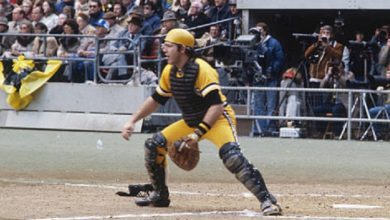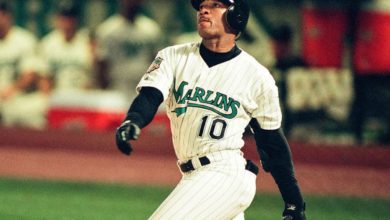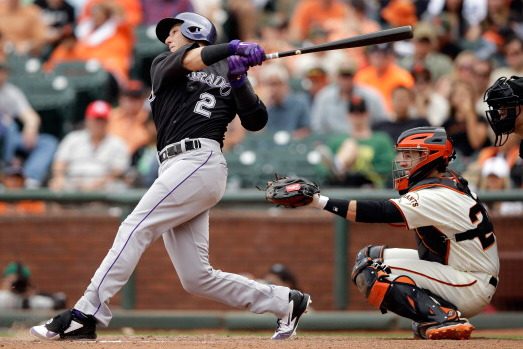
 The Mets have proven four things: they can pitch, they’re resilient, they’re a legitimate threat to contend and they believe they’re a legitimate threat to contend. Their starting rotation has the best ERA in the major leagues, and they’ve come from behind for almost half of their 20 wins. When the Mets had all their parts in place, they were winning in a variety of ways, and they never seemed out of a game.
The Mets have proven four things: they can pitch, they’re resilient, they’re a legitimate threat to contend and they believe they’re a legitimate threat to contend. Their starting rotation has the best ERA in the major leagues, and they’ve come from behind for almost half of their 20 wins. When the Mets had all their parts in place, they were winning in a variety of ways, and they never seemed out of a game.
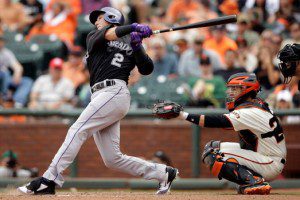
During the first two months of the season, the Mets tried to single-handedly bury the rest of their division, going on a 10-game run of wins against the National League East. At one point, the Mets had risen to the top tier of the MLB power rankings, and they were being discussed as baseball’s Cinderella for 2015. Catcher Travis d’Arnaud was clubbing the ball from the middle of the order, and captain David Wright had begun to hit like the player who was once discussed as an elite third baseman. Juan Lagares was playing a supernatural center field as usual, but moreover, he was hitting the ball well. Lucas Duda wasn’t hitting home runs, but he was hitting the ball hard as always — only this time against righties and lefties. Wilmer Flores was hitting, and the Mets were winning despite Daniel Murphy, perhaps their best overall hitter, being ice cold. Curtis Granderson was cold, too, but it didn’t seem to matter.
Then Wright injured his hamstring, d’Arnaud broke his hand and Lagares injured a core muscle. Meanwhile, the relief pitchers continued to drop like flies. Granderson and Murphy have begun to pick it up slightly, but without lineup protection, Duda is seeing tougher pitches. He’s still hitting the ball well, but he’s got nobody on base to drive in and opposing pitchers are more free to throw junk to keep him off kilter. Flores leads the team in home runs, but he’s still not hitting the ball consistently enough, and his play at shortstop has been mediocre at best. The Mets’ other shortstop, Ruben Tejada, has proven himself more serviceable than many believed, especially defensively; but his slap-hitting style is only relevant when the Mets’ bigger hitters are healthy and producing. When the Mets were filling the bases with runners and producing line drives up and down the lineup, Tejada’s scrappy at-bats and slap-doubles could clear the bases from the end of the lineup. Now, they just seem to prolong the inevitable, as the Mets continue to fail to back up their starters’ strong outings. Michael Cuddyer, a solid addition from both a tangible and intangible standpoint, has been a disappointment at the plate all season, depriving them of the extra right-handed bat they’d been hoping he’d provide.
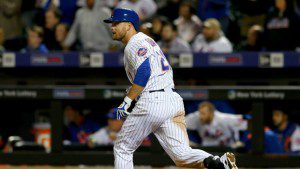
There’s one man in baseball that would address the Mets’ needs on both sides of the ball, while solidifying the perception of them as a bona-fide National League threat: Troy Tulowitzki.
Tulo has been healthy this season, after proclaiming that his most recent hip surgery would finally solve his issue of being injury-plagued. He’s still only 30 years old, and when healthy, he’s easily the best all-around shortstop in baseball. Unlike Starlin Castro, he hits consistently for average and doesn’t give away many at-bats. Unlike other strong-hitting shortstops like Jhonny Peralta, Tulo’s defense is outstanding.
Troy Tulowitzki in the middle of the order would be the best protection Lucas Duda could ask for, and perhaps Duda could even move back to third in the order, where he was actually flourishing. Back and hamstring injuries are both known to linger, so there’s no saying when Wright will return; but moving Murphy to third base, where’s he’s more comfortable than he’s ever been at second, will allow Dilson Herrera to slot in at second base. A Tulowitzki-Herrera combination up the middle, combined with Duda’s smooth play at first and a serviceable Murphy at third, would give the Mets a strong defensive infield. And once d’Arnaud returns (which seems imminent) and Lagares heals up (which so far seems plausible to happen soon), the Mets’ lineup could look like this (I’m leaving Granderson at leadoff for the purposes of those obsessed with alternating lefties and righties):
- Granderson, RF
- Lagares, CF
- Duda, 1B
- Tulowitzki, SS
- Murphy, 3B
- d’Arnaud, C
- Cuddyer, LF
- Herrera, 2B
That, ladies and gentlemen, is a daunting lineup.
The matter has been raised of Troy Tulowitzki’s widely anticipated price tag. The Rockies owe him $114 million through 2020, and would likely ask for one of the Mets’ big pitching prospects along with other considerations. And the Mets should be firm in their negotiations, with clear communication on what they won’t give away. For example, Harvey is a no-go, as he’s already emerging as the new face of the Mets’ future. But the Mets need to ask themselves: Do they want to continue to be a team that needs to win its games 2-1 or 3-2 in order to have a chance?
They already have an elite starting rotation, and even while battling injuries the bullpen is a strength. In Jeurys Familia, they have a closer who leads baseball in saves and is as sure of a thing as there it this side of Aroldis Chapman. Meanwhile, they have designated hitters as both middle infield positions and an offense that’s banged up and suddenly full of questions. A team that wants to remain in contention by way of pitching should have a defense that rewards their pitchers’ virtues.
And history is full of “give something to get something” trades that worked out for the team that gave away a prized prospect or talented player. Trading for Troy Tulowitzki would admittedly be a “win soon” move, but if the Mets are as close as they think they are, then how long will they wait to pull the trigger? Moreover, trading for Tulowitzki would be a final declaration to the entirety of baseball that the Mets are ready to jump into the pool of contenders.
The National League East is struggling from top to bottom, the Nationals’ recent streak notwithstanding; aside from the Cardinals, there isn’t a team in the National League that looks even close to elite. If the Mets get Troy Tulowitzki, their stock in the National League would immediately rise. Their defense, offense and morale would improve. If they have to rest him a game here or there to keep him healthy, they have decent game-at-a-time stopgap options. The time is now to put the final piece in place and make their run.



